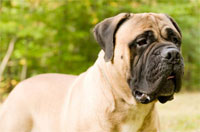科学家首次证实选择性饲养的宠物狗不仅在行为习惯方面发生了显著的改变,而且它们的大脑也发生了较大的变化。
新南威尔士大学和悉尼大学的研究人员已经发现,短鼻狗的大脑已经向前旋转了将近15度,而其控制嗅觉的大脑区域已经发生了根本性迁移。
伴随着12,000多年的人工饲养和选择,狗颅脑的大小和形状都发生了巨大的变化。狗大脑这种戏剧性重组织的发现引发了一个重要的关于对犬类行为影响的争论。这项研究结果发布在本月的PLoS ONE杂志上
研究人员使用核磁共振成像技术观察饲养犬的大脑变化。结果发现了狗颅脑形状和大小、大脑旋转和嗅叶位置的变化,
我们发现强烈和不相关的关联在狗颅脑形状和大小之间,以及大脑旋转和。研究人员表示。Valenzuela博士表示,随着狗头部和颅脑变得越来越美观,它们的大脑向前旋转,而嗅觉中心移动至颅脑的最低位置。
此外,尖牙在人类饲养过程中也是发生了巨大的变化。Valenzuela博士说:"很难想像,狗的大脑能够容纳这么巨大的颅脑形状改变。而有些变化在其他物种中也还没有记录。"
饲养也影响了犬的健康,比如哈巴狗的脑炎,德国牧羊犬的脊椎问题,这些都有很好的记录。然而到现在为止,几乎没人了解人类饲养行为对犬类大脑的影响。
这项研究的合作者悉尼大学的Paul McGreevy教授这样说,我们知道狗生活在嗅觉的世界里,而这项发现表明一只狗的嗅觉世界可能有别于另一只狗的,甚至可能会有很大差异。
推荐原文出处:
PLoS ONE doi:10.1371/journal.pone.0011946
Human Induced Rotation and Reorganization of the Brain of Domestic Dogs
Taryn Roberts1*, Paul McGreevy1, Michael Valenzuela2,3*
1 Faculty of Veterinary Science, University of Sydney, Sydney, New South Wales, Australia, 2 School of Psychiatry, University of New South Wales, Sydney, New South Wales, Australia, 3 Brain and Ageing Research Program, Faculty of Medicine, University of New South Wales, Sydney, New South Wales, Australia
Domestic dogs exhibit an extraordinary degree of morphological diversity. Such breed-to-breed variability applies equally to the canine skull, however little is known about whether this translates to systematic differences in cerebral organization. By looking at the paramedian sagittal magnetic resonance image slice of canine brains across a range of animals with different skull shapes (N = 13), we found that the relative reduction in skull length compared to width (measured by Cephalic Index) was significantly correlated to a progressive ventral pitching of the primary longitudinal brain axis (r = 0.83), as well as with a ventral shift in the position of the olfactory lobe (r = 0.81). Furthermore, these findings were independent of estimated brain size or body weight. Since brachycephaly has arisen from generations of highly selective breeding, this study suggests that the remarkable diversity in domesticated dogs' body shape and size appears to also have led to human-induced adaptations in the organization of the canine brain.








